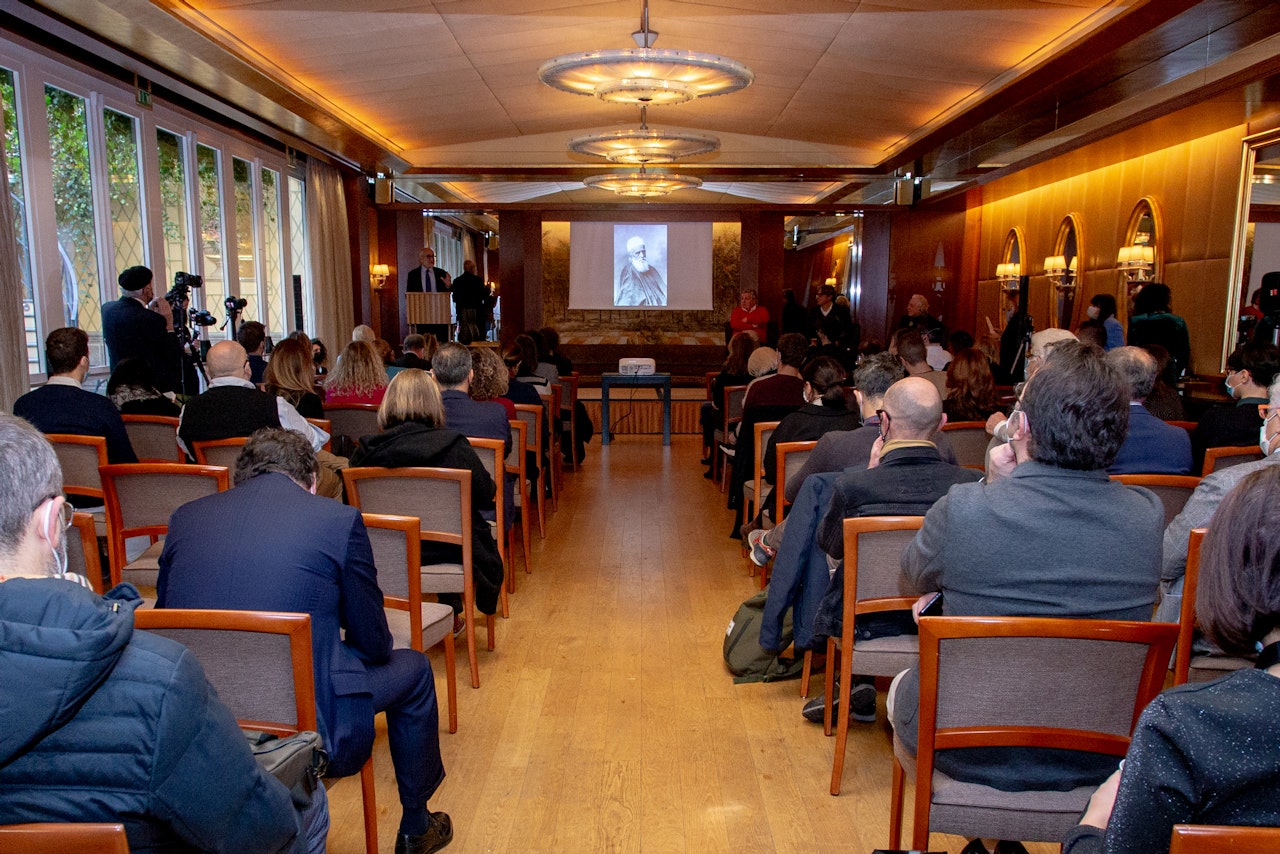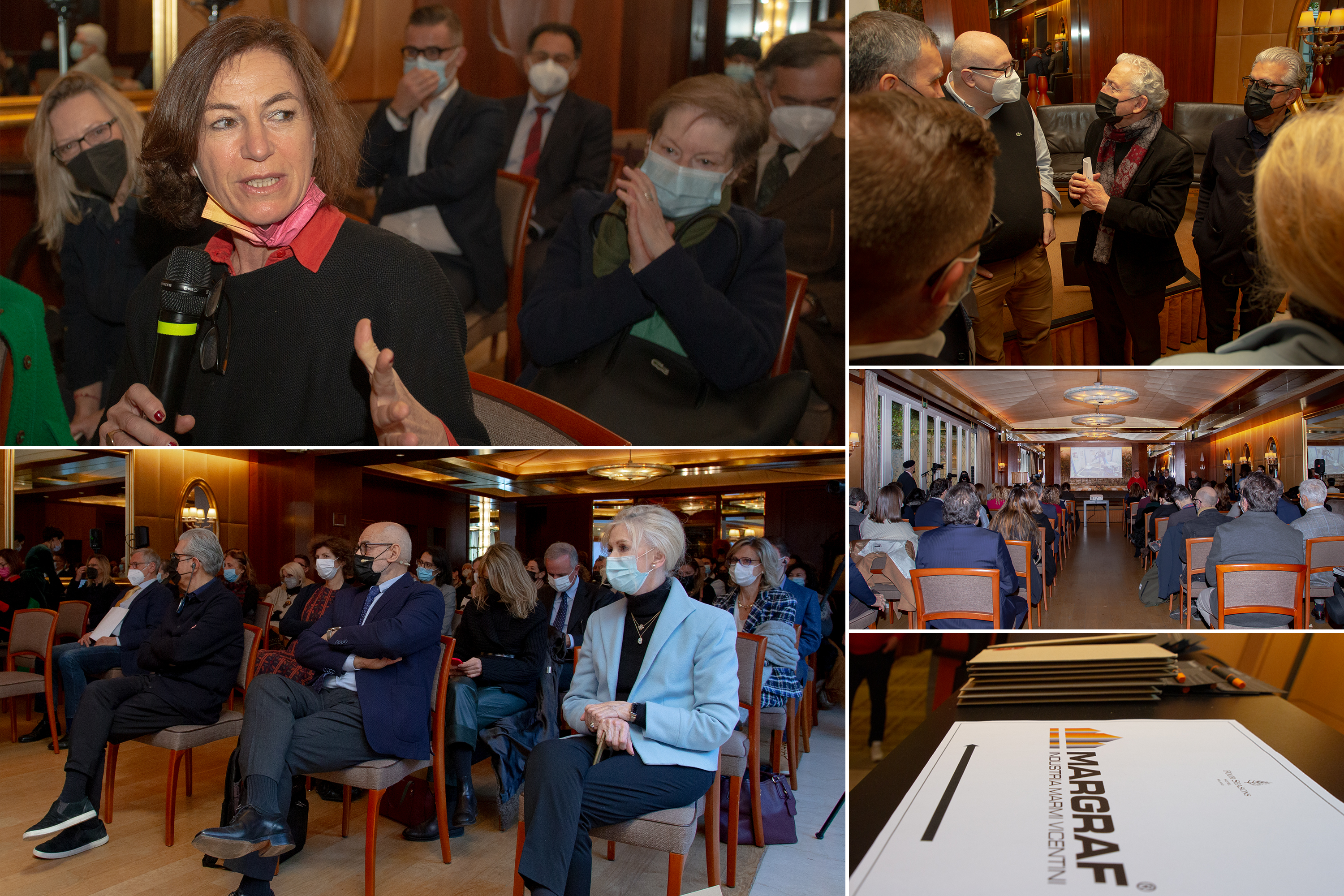Shrine of ‘Abdu’l-Bahá
Plans for marble presented at press conference in Italy
The president of marble company Margraf and architect Hossein Amanat spoke about the complexities of the construction project and fabrication of the marble

The president of marble company Margraf and architect Hossein Amanat spoke about the complexities of the construction project and fabrication of the marble

MILAN, Italy — Journalists from over 55 media outlets across Italy attended a press conference in Milan on Thursday to learn about the preparation of the marble that will clad the underside of the trellis, the central plaza of the Shrine of ‘Abdu’l-Bahá, and the eight columns of the main edifice.
“The design is a work of art. This structure takes on a particularly significant meaning because it is for the resting place of ‘Abdu’l-Bahá,” said Silvio Xompero, president of Margraf, the Italian marble company that also cut and chiseled the marble for the Seat of the Universal House of Justice, the International Bahá’í Archives building, the terraces in the Bahá’í Gardens in Haifa, and the Bahá’í Houses of Worship in India and Samoa.
Reflecting on the relationship between architecture and sacred spaces, Mr. Xompero further described how the trellis and skylights are designed to evoke spiritual feelings. “Once completed, every person visiting the Shrine will be able to look up from ‘Abdu’l-Bahá’s resting place, peer into the sky, and feel a connection between heaven and earth. It will be marvelous.”
Other attendees at the press conference included Hossein Amanat, who was selected by the Universal House of Justice as the architect for the project, Sohrab Youssefian, liaison between the project and Margraf, and two members of Italy’s Bahá’í National Spiritual Assembly.
“Every part of the Shrine, including the avenues and spaces in the gardens, has been designed to facilitate meditation,” said Mr. Amanat.
Describing the impact of the project on those involved in the stonework, Mr. Amanat stated: “The very atmosphere in the factory seems different. The workers have treated this project as something sacred, working with reverence and dignity.”
Mr. Youssefian spoke further about the sacred nature of the project: “The Shrine evokes the concept of the sacred for every visitor.
“Since the end of the Second World War, the Bahá’í community has had a very special relationship with Margraf. We have always understood each other. With their talent, they have transformed marble into something ethereal, worthy of the sacred.”

Alessandro Peotta, head of the Margraf Technical Office, echoed these sentiments, stating: “What was once a sculptor’s workspace has become an artist’s workshop.”
Mr. Peotta likened this project to earlier ones when the company had to devise new techniques. “In the Chiampo valley, memories of the construction of the Seat of the Universal House of Justice still evoke amazement,” he said.
“The inhabitants of the valley have many stories about that special period. Just as new techniques were devised 40 years ago, the same is happening again today.”
The fabrication of the marble has required newly developed machinery that can cut the stone directly from 3D models with extreme precision—a requirement of the project given the curved surfaces of the domed trellis.